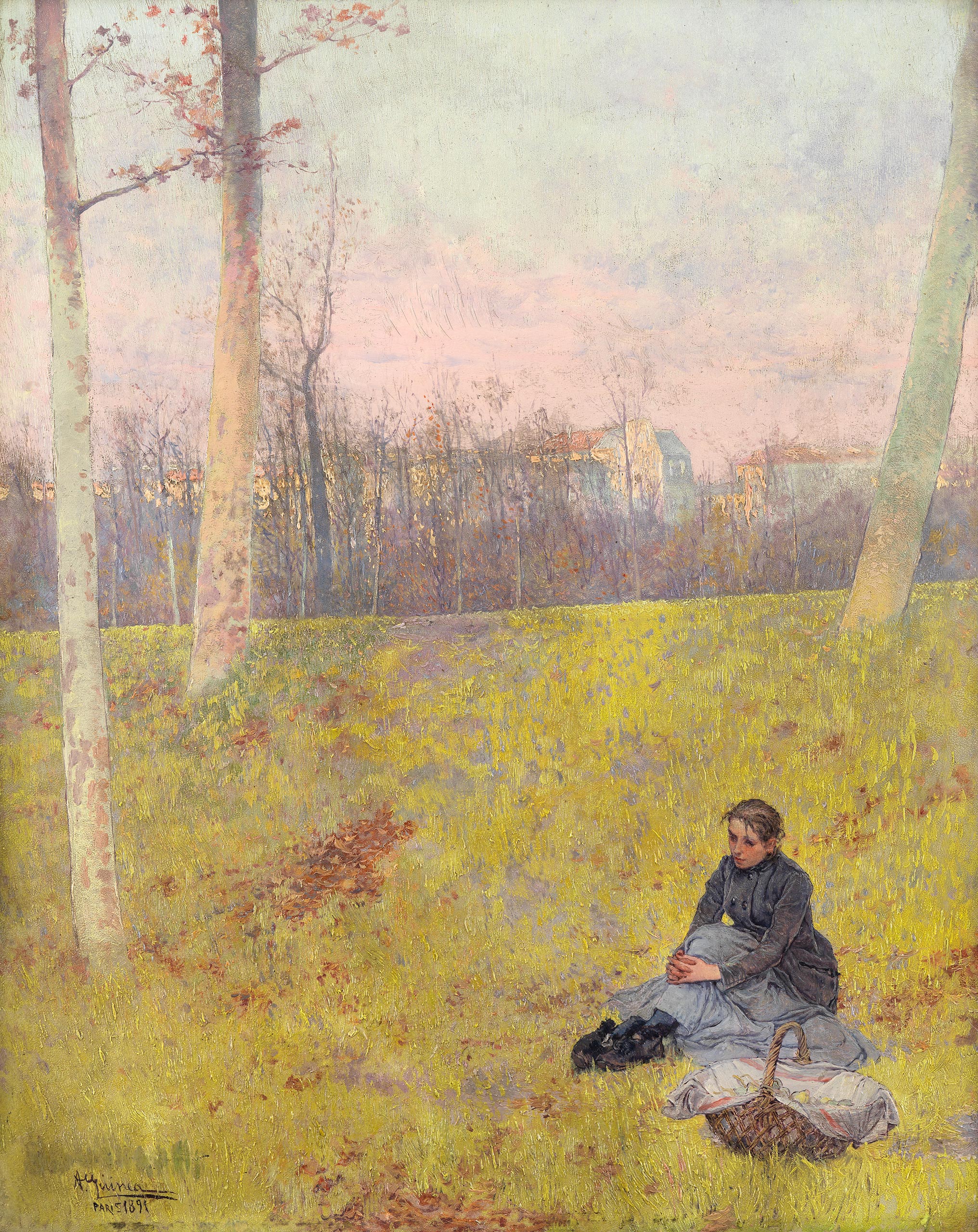
Guinea y Ugalde
Anselmo
Bilbao 1854 — 1906
Young Woman with a Fruit Basket
Oil on panel.
Signed, localized and dated A. Guinea Paris 1891 lower left.
41,2 x 32,5 cm (16 3/16 x 12 13/16 in.)
A painter, watercolourist and fresco artist, Guinea trained in Antonio María Lecuona’s studio in the early 1870s, where he assimilated the Spanish costumbrismo style. In 1873, he spent some time in Madrid and joined the painting school run by Federico de Madrazo. After a year in Rome in 1875, during which he met Mariano Fortuny, he became professor of drawing at the Bilbao School of Arts and Crafts in 1876, a post he held until his death. In 1881, he returned to Rome, where he settled for six years, continuing to produce picturesque works, scenes of Italian folklore and portraits of people in their traditional costumes, particularly in Rome, Naples and Capri. During the 1880s, like many painters in Europe and North America, he was influenced by the naturalist and poetic art of Jules Bastien- Lepage and, like him, gave his canvases the appearance of spontaneous encounters with the figures: his figures, often seen slightly from below, fill the entire space of the canvas and the horizon line is placed high behind them.
In 1890, he travelled to Paris with Manuel Losada and attended the Académie Gervex. He painted street scenes, frequented the Impressionist painters and, like his compatriots Adolfo Guiard and Juan Rochelt, was influenced by the work of the painter Jean-François Raffaelli and again by that of Jules Bastien-Lepage. Under the influence of the Impressionists, he became interested in landscapes for their own sake such as in Las Arenas desde Arriluce, (The Sands from Arriluce, circa 1893). He exhibited works at the Spanish National Art Exhibitions in 1884, 1895, 1897 and 1898, and at the Universal Exhibition in Barcelona in 1888. In 1902, he returned to Rome. From this time onwards, his work evolved towards a total eclecticism, in which he combined his attraction for genre scenes and costume with a pointillist style, the spontaneous naturalism of Bastien- Lepage, and an emerging symbolism, which gave his works a slightly extravagant, sometimes anecdotal aspect, but also an undeniable charm and mystery, making him one of the most interesting innovators of Basque painting.
This work was produced during the artist’s stay in Paris, and the influence of Bastien-Lepage and the Impressionists is perceptible in the motif, a common woman in dark clothes, and in the vibrant, fine brushstrokes. The colours are typical of the artist, who develops a surprising palette, ranging from mauve to yellow, as well as a strange layout, with the horizon line crossing the panel at a slight angle, as if the landscape were rising behind the seated young woman. The woman sitting alone, her hands around her knees, in this autumn landscape with its cool pink sky, exudes a certain melancholy and a sense of mystery. The brushstrokes are extremely delicate and fine, evoking the Impressionist technique that the artist discovered and admired in Paris. Vibrant light and clear, subtle colours were characteristic of his art in the early 1890s, and can be seen in works such as Las Segadoras (The Reapers) from 1892 and La Sirga (The Hauling) or La Salla del maiz (The Corn Harvest), both from 1893, but he throughout his career he retained a liking for muted colours and luminous yet melancholy tones, as in Gente (People, Bilbao Fine Arts Museum) in 1904.

